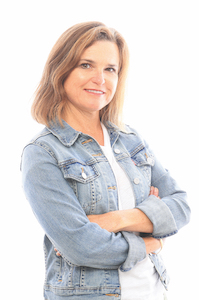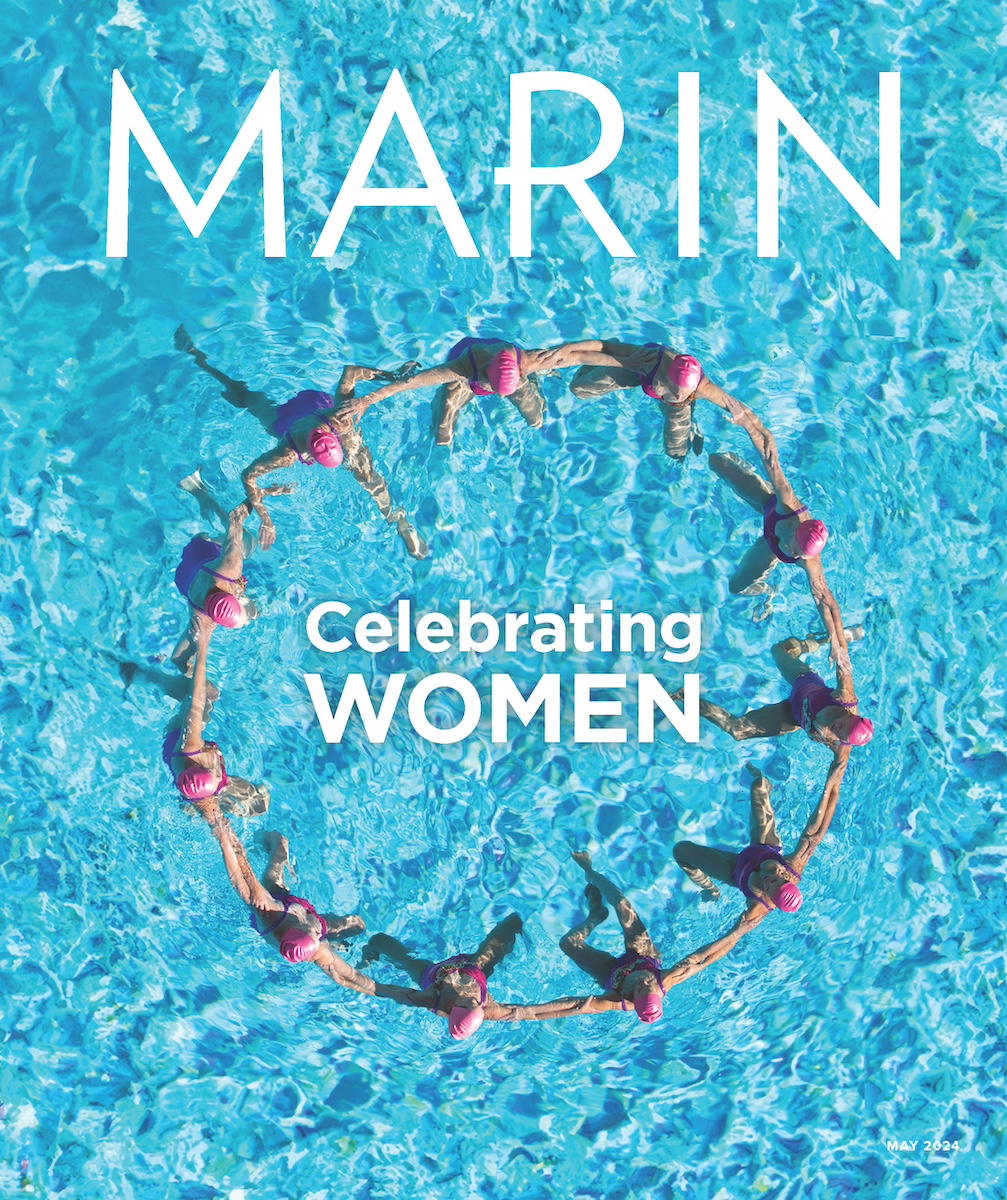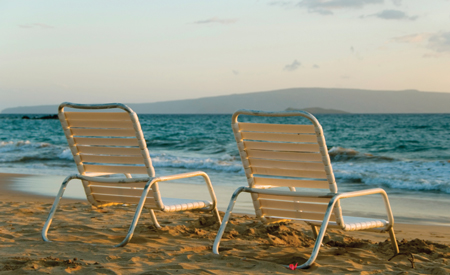Headed for Hawai‘i, not sure where to go? We asked veteran visitors and Facebook friends to tell us their favorite spots and why they go back.
O‘ahu: Waikiki or North Shore?
 Waikiki
Waikiki
The name Waikiki translates as “spouting fresh water,” referring to the days when freshwater springs and streams dominated the landscape. Hawaiians chose this white sand beach early on as a playground for the rich and royal. The first hotels for visitors were built in the late 1800s, including the Sans Souci, followed by the stately white Moana Surfrider, in 1901. In the late 1920s came the famous pink Royal Hawaiian, coinciding with construction of the Ala Wai Canal and subsequent draining of the wetlands, opening this one and a half square mile swath of land for development. Visitors to Waikiki come from all over the world; it’s not uncommon to hear five different languages spoken within earshot. And while you are not likely to run into your neighbor or coworker, San Francisco Bay Area is the second largest visitor market for this international destination.
“My favorite part of the day in Waikiki is dawn. Except for a few tourists wrestling with their own wacky time change, I usually have the beach to myself, and the calming rhythmic lapping of the waves prepares me for the day ahead. As a child on the windward side of O‘ahu, I saw Waikiki, on the leeward side, as “the bomb”: the shiniest, loudest, happiest place on earth, at least as glimpsed through the car window when our family cruised Kalakaua Avenue en route to the Outrigger Canoe Club. As an adult living on the mainland, I’ve returned every chance I get—often with my girls in tow. We’ve taken surf lessons with Hans Hedemann Surf School, returning home with photos of us tandem surfing (somehow we look a lot goofier with our hands in the air, giving the world our best hang-loose shakas and biggest smiles, than we felt at the time). We’ve rented paddleboards to look for dolphins. And it’s no surprise that my girls love the International Marketplace—heaven for a nine-year-old with $20 to spend—with over 100 shops and carts selling rhinestone geckos, puka shell necklaces and a chance to find a real pearl in an oyster. And then there are my food fixes: Chef Mavro for the big night, Alan Wong’s any night, and I can’t be within two miles of the Diamond Head Cove without stopping for one of the acai bowls. Like to shop? Ala Moana is the world’s largest outdoor mall, and the retail offerings of Waikiki always include something new: on the last visit my daughter was thrilled to find a Sanuk sandal store right next to our hotel. Waikiki is not a tranquil tropical escape—you can find that on the other side of the island, or any of the other neighbor islands. Waikiki is big, bold, busy and one of my favorite spots on the planet.”
Rooms:
Outrigger Reef, 639 rooms, $209–$1,299
The Royal Hawaiian, 529 rooms, $295–$1,360
Sheraton Waikiki, 1,636 rooms, $205–$4,100
Moana Surfrider, 793 rooms, $250–$3,520
Outrigger Waikiki, 524 rooms, $199–$1,299
Waikiki Edition, 353 rooms, $195–$9,995
Mimi Towle, senior editor of Marin Magazine, still calls Hawai‘i home even though she’s lived on the mainland all
her adult life. Waikiki has always been a favorite destination.
 North Shore O‘ahu
North Shore O‘ahu
In 1898, long before the monster waves of Waimea Bay enticed throngs of dudes and chicks to seek their own endless summer, businessman Benjamin Dillingham opened a hotel on a strip of land between the beach and the Anahulu River. He named his hotel Hale‘iwa—hale means “house of,” and iwa is a local graceful frigate bird. Dillingham wanted to create a destination that would encourage an extension of the railroad to reach his sugar plantations. His plan worked: people visited, and eventually the town adopted the name Hale‘iwa. There are a few small lodging options in town, but the main resort is Turtle Bay, with five miles of its own wild beach, three great restaurants, a public golf course and miles of backcountry for horseback riding. Visitors to the North Shore are loyal to their favorite food haunts, from legendary burger joints to shave ice stands to the prolific shrimp trucks.
“One of my favorite drives on the island is a trip up to the North Shore. I always head up through the windward side, stopping at the Pali lookout to soak in the views of Chinaman’s Hat and Kaneohe Bay. For lunch, an absolute must-try is the shrimp scampi plate from Giovanni’s Original White Shrimp Truck. A dozen or so huge shrimp, sautéed up with copious amounts of garlic, a squeeze of fresh lemon, and hot sauce on the side. Delicious! The beaches on the North Shore are great, but it all depends on what time of year you visit. In the summer, the water is usually pretty flat and good for snorkeling or checking out the turtles at Laniakea. In the winter, stay out of the water and leave the big waves to the pros—all the big-wave surf tournaments are held here during the winter and you can watch right from the shore. When I’ve got a sweet craving, I have to visit Ted’s Bakery for the chocolate haupia pie and Matsumoto’s for shave ice. Turtle Bay is a wonderful and romantic stop for a weekend in the North Shore and a good home base for exploring the world outside Waikiki.”
Rooms
Turtle Bay Resort, 375 rooms, $309–$1,670
Ke Iki Beach Bungalows, 11 bungalows, $135–$230
Malia Yoshioka is resident Hawai‘i expert at WhyGoHawaii.com and loves to explore the islands every chance she gets.
Kaua‘i: POIPU or Princeville?
 Poipu
Poipu
The name Poipu translates as “crashing waves” in Hawaiian, and if you’ve been to its namesake beach on the “sunny-side of the island,” you’ll agree the moniker is accurate. The Poipu Beach Hotel was the first resort to open in 1962, followed by the Sheraton in 1968. The area’s agrarian past is also celebrated at the Plantation Gardens restaurant, with photos and memorabilia of the Hector Moir family. Famously in the path of destruction of Hurricane Iniki in 1992, Poipu has been rebuilt and is back stronger (and luxer) than ever. Poipu is also popular for having accommodations to fit all budgets, and for superb golfing and water activities like body-surfing; the scenic drive west to stunning Waimea Canyon is considered a must.
“One of the first things I love about Poipu is getting there. Driving through the ‘tree tunnel’ on Highway 520/Maluhia Road, followed by charming Koloa town before heading down to Poipu, strips away all the stress from the mainland that I might have brought with me! The climate is sunnier and drier than the rest of the island’s, and most of the beaches are swimmable. It’s also a great central location, situated between the north shore and Waimea Canyon. When I get there, I love to body-surf at Kiahuna Beach or at the beach in front of the Sheraton, have lunch and a beer down the road at Brennecke’s and later dinner and champagne at the Beach House. My favorite spot to watch the sunset (glass of wine in hand, standing in the water) is at the protected cove called Baby Beach. And truly a stunning walk is out through the lithified cliffs to Haula Beach. I usually rent a home at Turtle Cove, but for clients who want a resort-type condo, I recommend Kiahuna Plantation. I love the grounds and the old plantation feel of the property—plus, it’s on Poipu Beach. If they want something more luxurious, the Hyatt.”
Rooms
Grand Hyatt Kaua‘i, 602 rooms, $440–$5,200
Koa Kea Hotel & Resort, 121 rooms, $329–$2,572
Sheraton Kaua‘i Resort, 394 rooms, $239–$3,600
Outrigger Kiahuna Plantation, 200 condos. $179–$545
Nancy Williams, founder of honeymoon registry website HoneyLuna, has been to almost every romantic part of the islands and to her favorite island, Kaua‘i, at least 10 times.
 Princeville
Princeville
On the north side of the island, Princeville is renowned for its dramatic vistas (as well as its golf offerings). Hawaiians grew taro plants in the fertile Hanalei Valley. When Westerners first arrived they brought livestock and grew potatoes and fruit (which was exported to feed the California gold miners during the Gold Rush). Plantation owner Robert Crichton Wyllie named the area in honor of an 1860 visit by the young Prince Albert Kamehameha, Hawai‘i’s crown prince. The first major hotel, the Princeville Resort, built in 1985, is now The St. Regis Princeville Resort. Activities include swimming at Hanalei Bay and Kee Beach; horseback riding, zip-lining, snorkeling, kayaking, stand-up paddleboarding and surfing; hiking the Hanakapiai and the Kalalau trails; browsing the shops in Hanalei town; and sightseeing jaunts to Hanalei lookout, the Kilauea Point National Wildlife Refuge and Lighthouse, and (by boat) the fabled cliffs of the Na Pali Coast.
“Hands down we love the Hanalei/Princeville (north shore) area of Kaua‘i. The weather may vary, but the local feel can’t be beat and there are many possibilities for extreme adventures—great surfing, kayaking, climbing, golfing, zip-lining. We stay at the Westin Princeville Ocean Villas; the all-inclusive nature of the resort is great for families. It’s also fun to rent a house on Hanalei Bay. Some must-dos on the north shore: golf at Princeville (best golf in the world), the ahi burrito at Kilauea Fish Market, and hanging on Hanalei Bay beach, watching the sunset with a mai tai.”
Rooms
The St. Regis Princeville Resort, 252 rooms, $375–$6,500
The Westin Princeville Ocean Resort Villas, 358 rooms, $259–$1,535
Stephanie Ziegler, owner of Tiburon Pilates, has been going to Hawai‘i for nearly 20 years and has been to every island except for Lana‘i.
MAUI: Wailea or Ka‘anapali?
 Wailea
Wailea
Wailea is named for a Hawaiian legend about a goddess named Lea who was transformed into a beautiful bird often seen flying over the wai (water) at five crescent-shaped golden-sand beaches. In 1957, the Matson Navigation Company purchased 1,500 acres of scrubland on the sunny southwest part of the island to expand its hotel operations. The first hotel, the Maui Intercontinental (now the Marriott), didn’t appear until 1973; today, quite an array of lodging options line the 1.5-mile coastal trail. Each resort offers its own unique experience, from the huge waterslides of the Grand Wailea to the super-luxe Four Seasons. Activity offerings include three championship golf courses at the Wailea Golf Club, with a David Leadbetter golf academy; 11 tennis courts at the Wailea Tennis Club; five spas plus fitness centers at the resort hotels; and shopping or dining at the Shops at Wailea. One of the most popular events here is the Maui Film Festival, which each June attracts celebrities and film buffs from around the world.
“We started visiting Maui together about 15 years ago and eventually purchased a home in Makena, right next to Wailea on Ahihi Bay, which Jacques Cousteau dubbed one of his 10 favorite snorkeling spots. We chose the leeward side of the island because of the dry climate. It will be sunny here when it is raining everywhere else. Also, we love the views of Kahoolawee, Molokini and Lana‘i. Our first-night ritual is to dine at Joe’s Bar and Grill; we love Joe’s barbecue ribs and Sharon, the manager, is very knowledgeable about wine.”
Rooms
Fairmont Kea Lani Maui, 413 rooms, $479–$2,400
Destination Resorts Hawai‘i, 260 condos, $250–$2,800
Makena Beach and Golf Resort, 305 rooms, $289–$1,800
Four Seasons Resort Maui, 380 rooms, $465–$14,500
Grand Wailea Resort Hotel and Spa/Ho’olei, 780 rooms, $389–$1,294
Mary Constant and her husband, Freddy, split their time between Maui and Napa, where they own the Constant Diamond Mountain Winery.
 Ka‘anapali
Ka‘anapali
Located just north of the historic whaling village of Lahaina, Ka‘anapali means “the rolling cliffs,” a reference to the wide, open ridges behind the beach that sweep upward to Puu Kukui, the highest mountain peak on West Maui. Legend has it this three-mile stretch of white sand was not only a favorite resting spot for Hawaiian kings and queens, but a training spot for warriors. Today these sands are home to weekend warriors visiting from around the world, looking for a slice of paradise. Development didn’t start happening here until the 1960s, with the Royal Lahaina, built in 1962, followed by a Sheraton in 1963, Ka‘anapali Beach Resort in 1964 and a Hilton in 1965. The ’80s saw a second wave, with the Hyatt Regency in 1980, the Maui Marriot in 1982 and the renovation of the Maui Surf into a Westin in 1987. At the north end of the three-mile paved path is Black Rock, or Pu‘u Keka‘a, where ancient Hawaiians believed the souls of the dead leapt from this earth to join their ancestors in the spirit world.
“It’s all about the beach. Ka‘anapali Beach Hotel was developed in the 1960s along the mile-long Ka‘anapali Beach, a gorgeous stretch of golden sand on the leeward side of the island (less rain, more sun). Ka‘anapali is an all-inclusive, park-it-and-leave-it resort with a bewildering number of lodging choices in every price range, as well as golf, tennis, diving, etc. It’s not the fanciest (the Kapalua Resort up the road is far nicer), but it offers the best bang for your buck without being cheesy and cheap. It’s also family-friendly with tons of children’s activities that allow the parents some … personal time.
Even the locals like to hang out at Leilani’s on the Beach at Whaler’s Village. It’s by far the most popular place to drink and dine at Ka‘anapali. If you’re a fan of TS Restaurants—Sunnyside in Tahoe, Duke’s, Jakes in Del Mar—you know the vibe. Other highlights include the nightly sunset cliff-diver ritual at the Sheraton Maui, a sunset sail on one of the catamarans that dock right on the beach, and the nightly hula show at the Ka‘anapali Beach Hotel. Above all, make a plan to watch every sunset, every night. Nobody on their deathbed said ‘I saw too many beautiful sunsets.’”
Rooms
Hyatt Regency Maui Resort and Spa, 806 rooms, $270–$7,000
Ka‘anapali Beach Hotel, 430 rooms, $143–$327
Sheraton Maui Resort and Spa, 508 rooms, $279–$5,00
Westin Maui Resort, 759 rooms, $299–$1,100
Honua Kai Resort, 628 rooms, $525-$2,500
Royal Lahaian Resort, 506 rooms, $199-$895
When former Maui resident and travel writer Matthew Poole of Mill Valley planned his first out-of-pocket trip to Maui, he remembered how much he enjoyed a press trip to the Ka‘anapali Beach Hotel. When he saw it included in the offerings of Pleasant Hawaiian Holidays, he booked a true vacation, leaving his laptop at home.
Big Island: Kona or Kohala?
 Kona
Kona
In the Hawaiian language kona means leeward, referring to the dry side of the island, as opposed to ko‘olau, which means the windward or wet side of the island. In ancient Hawai‘i, Kona was the name of the leeward district on each major island. The Kona on the Big Island was named Kailua-Kona for clarity. This popular retirement town is just south of the airport and was the original capital of King Kamehameha’s unified Kingdom of Hawai‘i. When the capital moved to Lahaina on Maui and eventually to Honolulu on O‘ahu, Kona remained a retreat for the royal family. The Kona Coast Hotel, Kona Surf and the King Kamehameha were the first major hotels in the area and have all been recently renovated; the Kona Surf is now the Sheraton Keauhou Bay Resort and Spa. Known for its nearby black sand beaches, this town is also host to the Ironman World Championship triathlon, the Kona Coffee Cultural Festival and the Hawaiian International Billfish Tournament. Perhaps best of all, for travelers on a budget, Kona features great restaurants, abundant activities and newly renovated rooms for a fraction of the cost of most resorts just up the coast in Kohala.
“I still remember my first visit here. I had left Idaho while it was still quite gray and arrived in Kona where everything was in Technicolor. I felt like I had landed in Oz! People who wouldn’t want to move here say, ‘I would miss the seasons.’ I say, ‘We have seasons! They are just different than on the mainland. We have whale season (December to April), when the humpbacks come to warm water to give birth. We have jacaranda season (February to June), when the hills are filled with lavender-tinted trees. We have night-blooming cereus season (June to October), when the gnarled cactus along the rock walls blossoms until the morning light brightens, and of course we have Ironman season (October)!” There are many beautiful places, but I am so blessed to call Kona my home.”
Rooms
Sheraton Keauhou, 521 rooms, $189–$2,550
King Kamehameha’s Kona Beach Hotel, 452 rooms, $149–$499
Royal Kona Resort, 436 rooms, $115–$550
Barbarak Sasaki, a handbag designer, moved to Kona in 1994 after visiting only once before. “I fell in love with the culture and the people, and the weather wasn’t bad either!”
 Kohala
Kohala
For regulars to the Kohala Coast the fact that this 20-mile stretch only gets seven inches of rain a year is not a surprise. Named after the oldest of the five volcanoes on the Big Island and estimated to be over a million years old, Kohala the mountain is just north of the hotels. The Kohala Coast boasts some of the iconic Hawaiian destination properties, including the Mauna Kea Beach Hotel, completed in 1965, and the Kona Village, completed shortly thereafter. Besides luxurious hotels and top-of-the-line spas, this area boasts seven golf courses and excellent restaurants.
“We would go to the short game area at Hapuna Golf Course when Brody was two. He would go through a bucket, practice putting, and then enjoy a grilled cheese sandwich in the clubhouse; this was so much fun. Then we would head to the Mauna Kea to swim and he would catch waves on his boogie board. We also loved going to the Mauna Lani to see the turtles. When people came to visit, we would suggest they catch the sunset and get dinner at the Canoe House at the Mauna Lani, or enjoy island-style farm-to-table cuisine at Merriman’s in Waimea. If they were traveling with kids, Cafe Pesto at Kawaihae Harbor. One of our favorite things to share about the Big Island is the Onizuka Center observatory at about 9,000 feet on Mauna Kea—amazing clarity of sky and volume of stars.”
Rooms
Mauna Kea Beach Hotel, 258 rooms, $500–3,500
Hapuna Beach Hotel, 350 rooms, $415–$1,000
The Mauna Lani Bay, 343 rooms, $395–4,655
Fairmont Orchid, 538 rooms, $292–$3,900
Hilton Waikoloa, 1,242 roomss, $219–$1,199
Belvedere residents Kim and Joe Root recently returned from a three-year stint of living on the Big Island, where their son, Brody, was able to enjoy his barefoot toddler years playing in the sand. Joe was the director of golf for five years at the Mauna Kea Beach Hotel and is now working on a new golf/residential project called Kohanaiki on the Kona Coast. Kim recalls their sunny sojourn.

Mimi Towle has been the editor of Marin Magazine for over a decade. She lived with her family in Sycamore Park and Strawberry and thoroughly enjoyed raising two daughters in the mayhem of Marin’s youth sports; soccer, swim, volleyball, ballet, hip hop, gymnastics and many many hours spent at Miwok Stables. Her community involvements include volunteering at her daughter’s schools, coaching soccer and volleyball (glorified snack mom), being on the board of both Richardson Bay Audubon Center. Currently residing on a floating home in Sausalito, she enjoys all water activity, including learning how to steer a 6-person canoe for the Tamalpais Outrigger Canoe Club. Born and raised in Hawaii, her fondness for the islands has on occasion made its way into the pages of the magazine.


